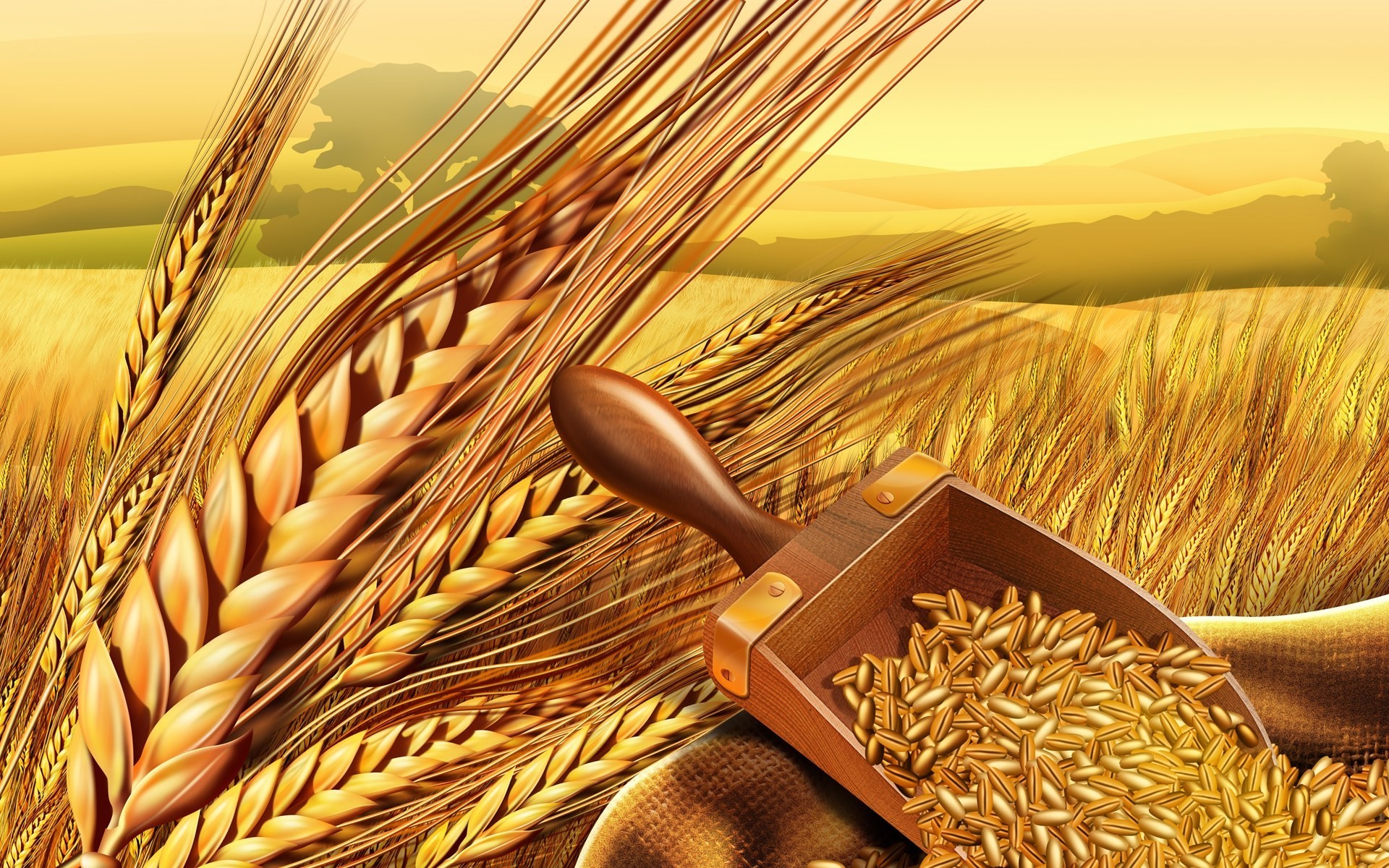India is one of the main wheat producing and consuming countries of the world. After the Green Revo ...
Wheat, one of the most widely cultivated cereal crops, plays a crucial role in global food security. Known for its adaptability, wheat is grown in various climatic conditions across the world. In India, wheat is primarily grown during the Rabi season, providing a staple food source for millions.
गेहूं भारत की प्रमुख फसलों में से एक है और इसे रबी की मुख्य फसल माना जाता है। भारत में गेहूं की खेती मुख्यतः सर्दियों के मौसम में की जाती है और यह देश की खाद्य सुरक्षा में महत्वपूर्ण भूमिका निभाता है। गेहूं की खेती से न केवल किसान आर्थिक रूप से मजबूत होते हैं, बल्कि यह लोगों के लिए पोषण का भी एक महत्वपूर्ण स्रोत है।
गेहूं की खेती के लिए उपयुक्त मिट्टी दोमट और काली मिट्टी होती है, जिसमें जल निकासी की अच्छी व्यवस्था हो। यह फसल ठंडी जलवायु में अच्छी तरह से पनपती है, और 10-15 डिग्री सेल्सियस का तापमान इसके अंकुरण के लिए आदर्श होता है। फसल की वृद्धि के समय 21-26 डिग्री सेल्सियस का तापमान सबसे अच्छा माना जाता है।

गेहूं की बुवाई का समय अक्टूबर के मध्य से नवंबर के अंत तक का होता है। यह समय फसल की अच्छी वृद्धि और अधिक उत्पादन के लिए उपयुक्त माना जाता है। सही समय पर बुवाई करने से पैदावार में वृद्धि होती है और फसल विभिन्न रोगों से भी सुरक्षित रहती है।
उत्तम गुणवत्ता के बीज का चयन करना गेहूं की अच्छी पैदावार के लिए जरूरी है। बीजों को बोने से पहले उन्हें 8-10 घंटे तक पानी में भिगोना चाहिए और फिर सूखी छाया में सुखाना चाहिए। बुवाई की विधि में कतारों में बुवाई सबसे अधिक प्रभावी मानी जाती है, जिसमें बीजों को 4-5 सेंटीमीटर की गहराई पर बोया जाता है।

गेहूं की अच्छी फसल के लिए मिट्टी में पोषक तत्वों का होना आवश्यक है। इसलिए, खेत की तैयारी के समय 10-12 टन गोबर की खाद प्रति हेक्टेयर डालनी चाहिए। इसके अलावा, 120-150 किलोग्राम नाइट्रोजन, 60-80 किलोग्राम फॉस्फोरस और 40-60 किलोग्राम पोटाश प्रति हेक्टेयर आवश्यक होते हैं।
यह भी पढ़ें: गेहूं की किस्में | गेहूं की बीमारियाँ
गेहूं की फसल को सामान्यतः 4-6 बार सिंचाई की जरूरत होती है। पहली सिंचाई बुवाई के 20-25 दिन बाद करनी चाहिए और दूसरी सिंचाई 40-45 दिन बाद। इसके बाद की सिंचाई आवश्यकतानुसार की जानी चाहिए। साथ ही, फसल में खरपतवार नियंत्रण और कीट-रोगों से बचाव के लिए नियमित निरीक्षण जरूरी है।
गेहूं की कटाई तब करनी चाहिए जब फसल पूरी तरह से पक जाए और बालियां पीली हो जाएं। कटाई के बाद फसल को 2-3 दिन धूप में सुखाना चाहिए ताकि उसमें नमी न रहे। इसके बाद, अनाज को साफ करके सूखे और हवादार स्थान पर भंडारित करना चाहिए।

गेहूं की खेती भारत के अधिकांश हिस्सों में की जाती है और यह किसानों के लिए एक महत्वपूर्ण आय का स्रोत है। सही समय पर बुवाई, उचित खाद और उर्वरक, और नियमित देखभाल से गेहूं की पैदावार को बढ़ाया जा सकता है। उम्मीद है कि इस लेख से आपको गेहूं की खेती के बारे में महत्वपूर्ण जानकारी प्राप्त हुई होगी।
Wheat thrives best in cool and dry climates. The ideal temperature for wheat cultivation ranges between 10°C to 25°C. It requires well-drained loamy soil rich in organic matter. Soil pH should ideally be between 6.0 to 7.5 for optimal growth. Adequate soil preparation, including plowing and leveling, is essential for healthy crop development.
In India, the best time to sow wheat is from mid-November to December. Selecting high-quality, disease-resistant seeds is crucial for a good yield. The seeds should be treated with fungicides to protect them from soil-borne diseases. The recommended seed rate is around 100 to 125 kg per hectare, depending on the variety.
Wheat requires timely irrigation, especially during critical growth stages like crown root initiation, flowering, and grain filling. Typically, 4 to 6 irrigations are sufficient for wheat, depending on the climatic conditions. Fertilization is another critical aspect, with the recommended dose being around 120 kg of Nitrogen, 60 kg of Phosphorus, and 40 kg of Potassium per hectare. Applying organic manure before sowing also enhances soil fertility.
Weeds can significantly affect wheat yield if not controlled timely. Using herbicides like Isoproturon or 2,4-D can effectively manage weed growth. Additionally, crop rotation and proper field sanitation practices can help minimize weed infestation. For pest management, regular monitoring of the crop for signs of aphids, rust, and other common wheat pests is essential. Integrated pest management (IPM) practices, including the use of biopesticides and resistant varieties, are recommended.
Wheat is usually ready for harvest around 4 to 5 months after sowing when the grains reach full maturity and turn golden brown. It is crucial to harvest at the right time to avoid grain shedding and quality deterioration. After harvesting, the wheat is threshed to separate the grains from the straw. Proper storage conditions are necessary to protect the grains from moisture and pests.
Wheat farming, with its significant role in ensuring food security, requires careful attention to various agricultural practices. From choosing the right seeds to managing pests and ensuring timely irrigation, every step is crucial for a successful wheat crop. By following best practices and modern farming techniques, farmers can achieve higher yields and contribute to the nation’s food supply.
0
0
India is one of the main wheat producing and consuming countries of the world. After the Green Revo ...